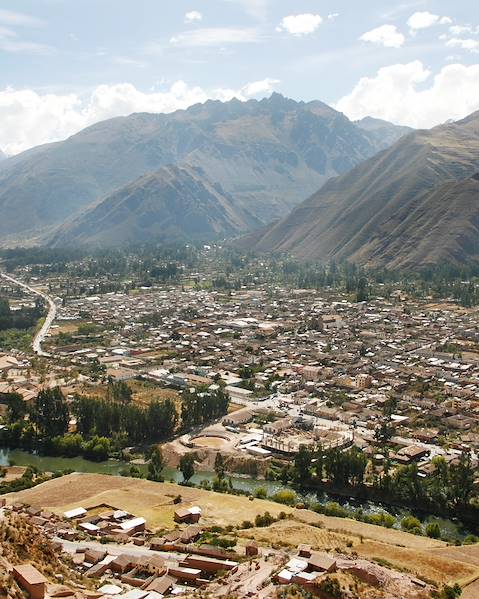While Peru’s varied geography, spanning lush jungle, epic mountains and rugged coastline, make it an exciting country to visit, it can also make it somewhat challenging to navigate. But there’s no need to worry. Our guide to transport in Peru reveals the best ways to get around, from planes and buses to boats and trains.
By Plane
Flying is a quick and safe mode of transport in Peru. LATAM Peru, Star Peru, Avianca and Peruvian Airlines carry the bulk of domestic passengers. These airlines are great for travelling between Lima, Cusco and Arequipa, as well as servicing more isolated places like Iquitos and Pucallpa. However, it should be noted that some popular destinations, such as Paracas (for the Ballestas Islands and National Reserve), Huacachina (South America´s only desert oasis) and Nazca (home of the Nazca Lines) are not accessible via plane.
By Boat
In areas such as Lake Titicaca and especially in the jungle, boats are the obvious means of transport in Peru. On Lake Titicaca, numerous vessels venture out onto the calm waters to take visitors out to the various islands, from Puno, as small boats are the only means of reaching these remote island communities. In the jungle, passenger boats called lanchas operate out of Yurimaguas and Pucallpa, taking visitors to places further inland, like Iquitos. These journeys can take several days and are great for those who are happy to sleep in a hammock while watching the beautiful jungle float by, but shorter trips and transfers via motorboat or canoe feature in most jungle itineraries. Note there’s no official ferry between Peru and Bolivia; it’s far easier to take a local bus from Puno and ride across the border.
By Bus
Buses are the go-to means of transport for most Peruvians and are an inexpensive (if sometimes slow) way to travel between cities. There are multiple companies to choose from. Lima-based Cruz del Sur services major cities across Peru, La Linea owns a modern fleet of buses that are ideal for travelling to Northern cities like Huaraz, while PeruHop is a hop-on, hop-off network running between Lima, Cusco, and La Paz via cities like Paracas, Arequipa and Puno. Other popular operators are Tepsa and Movil. Different bus companies leave from different points, and the ticket office will often be in a separate location to the departure point, so double-check the details. Urban buses are called combis, colectivos or micros. They are a cheap and easy way to get around cities like Lima, but you’ll need change as they don’t have automated ticketing. And hold on tight, they tend to be a bit of a wild ride.
By Car
While we wouldn’t recommend driving in and around Peru’s cities, renting a car is worth considering if you want to explore less built-up areas. Well known rental agencies like Hertz and Alamo operate in Peru, making it easy to grab a car and cruise through serene valleys and majestic mountains at your own pace. Most main roads are in good condition, such as the section of the Panamerican Highway that runs through Peru, but minor roads are rarely paved. When renting a car – particularly if heading towards the jungle or Andes – it’s best to opt for one with four-wheel-drive due to the rough terrain. And note that the rules of the road are different in Peru – the bigger vehicle has the right of way.
By Taxi
When travelling within cities and towns, taxis are one of the best forms of transport in Peru. Public taxis aren’t regulated, don’t use a meter and often charge tourists higher rates, so private taxis are the safest and most reliable option. If you do end up hailing a cab on the street, make sure it has a taxi sticker and agree the price before you get in. Ride-hailing apps such as Uber, Easy Taxi and Beat are also available in Peru’s larger cities. In the case of smaller towns – particularly in the highlands and jungle – moto taxis (Peruvian tuk-tuks) replace conventional cars and make for a fun way to get around.
By Train
Travelling by train in Peru is something of a novelty as only a handful of destinations have rail services. Journeys can often be slow and bumpy but are particularly rewarding in the Andes where the scenery is seriously impressive. Peru’s most popular and famous train ride is the journey from Cusco or Ollantaytambo to Machu Picchu, offering views of verdant valleys enroute to the final stop in Aguas Calientes (a 30-minute bus journey from the ancient citadel). Ferrocarril Central Andino is another scenic train ride; it’s one of the highest rail routes in the world and connects Lima to Huancayo (a town in the central Peruvian Andes), climbing to 15,689 feet in the process. PeruRail also operates trains from Cusco to Puno and Arequipa. Lima is the only city with the luxury of a metro system. It’s a bit limited, but there’s a train line running from 6am-11pm seven days a week connecting Villa El Salvador in the south of the city to San Juan de Lurigancho in the north. Route, prices and timetables are available online.
By Bike
Cyclists in Peru have a range of options, from gentle city tours to week-long, technical bike trips. Peru’s Andean mountains offer some of the world’s most spectacular off-road cycling, while biking through Colca Canyon’s breath-taking ravine is hard to beat. Visitors can even cycle through the jungle in Parc Nacional Manu. For the city bound, half-day guided bike tours along Lima’s cycle paths are a great way to see the capital’s highlights, including the up-scale neighbourhoods of San Isidro, Miraflores and Barranco.
















